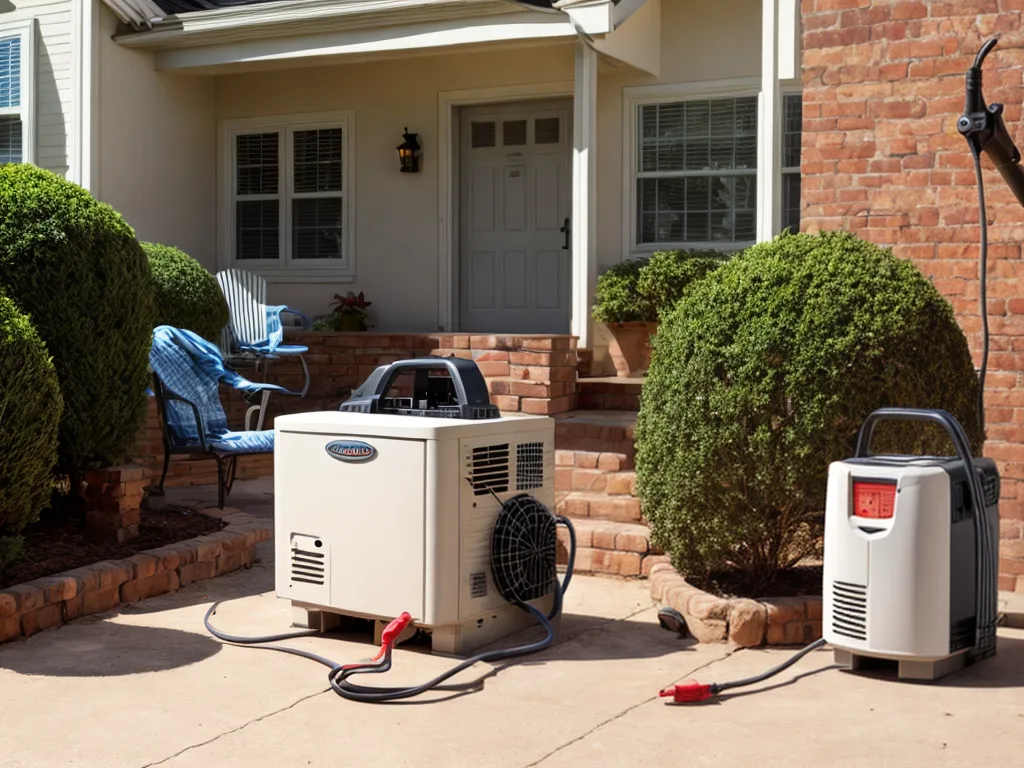
How to Wire a Generator to Your Home Safely
Connecting a generator to your home's electrical system requires caution and care. Improper generator installation can lead to electrocution, fires, and damage to your home and appliances. Here is a step-by-step guide on how I safely wired a generator to my home:
Research Generator and Transfer Switch Options
Before purchasing any equipment, I thoroughly researched the different generator and transfer switch options. Key factors I considered included:
-
Generator size - I calculated the running watts I would need to power essential appliances and devices during an outage. I opted for a 7000-watt portable generator to provide sufficient power.
-
Fuel type - Most models run on gasoline or propane. I chose a dual-fuel generator that can use both fuels to maximize flexibility.
-
Transfer switch - This device safely transfers power from the generator to your home's circuits. I selected an outdoor 200-amp automatic transfer switch as it was compatible with my electrical system.
-
Circuits to power - I identified the essential lighting, refrigerator, well pump, and other circuits I wanted to power during an outage.
Thorough planning ensures your generator and transfer switch are properly sized for your needs. Consult an electrician if you are unsure what equipment is appropriate.
Hire a Licensed Electrician
While connecting a generator to your home is a do-it-yourself project for some, I hired a licensed electrician to install my transfer switch and final wiring. Improper wiring can overload generator circuits, backfeed electricity, and put utility workers at risk.
Professionals have the expertise to correctly integrate the generator with your home's electrical system. They also handle permitting and inspections to ensure compliance with local codes.
Safely Connect the Transfer Switch
My electrician installed the outdoor transfer switch on the exterior wall near my main electric panel. He routed thick 10-AWG wires through conduits from the switch into the house electrical panel.
The switch has two sets of inputs and outputs. The inputs connect to the house's main utility service and the generator's 240-volt outlet. The outputs feed power from either source into the home electrical system.
The electrician properly sized all wiring and circuit breakers and labeled the connections clearly. This ensures safe operation when switching between utility and generator power.
Create a Level Outdoor Generator Pad
I had a 4-inch thick concrete pad poured about 25 feet from my house to accommodate the generator. Mounting it directly on the ground could cause vibration issues over time. The pad sits on compacted gravel to improve drainage.
I marked the pad with the generator's footprint and drilled a hole for routing the extension cord up through the pad. Leveling the pad prevents gasoline or oil spills when refueling the generator. The outdoor location prevents deadly carbon monoxide poisoning.
Safety Check All Connections
I verified that the transfer switch wiring was correctly connected to the main electric panel and generator. Polarity and grounding must be properly established for safety.
With the main utility power shut off at the breaker, I tested running the generator to power the circuits through the transfer switch. My electrician also inspected the installation before final approval.
Establish a Safe Generator Operation Routine
Before any outage, I developed a safety routine to follow when running the generator:
- Check and refuel generator in advance
- Turn off main utility breaker before starting generator
- Ensure appliances are switched off before transfer switch activates
- Run generator at least 10 feet from the house with exhaust pointed away
- Never operate generator inside home or garage
- Turn off and refuel generator only when fully cooled down
- Store fuel safely away from living areas
By thoroughly planning the installation and following strict safety procedures, I successfully wired my home generator to provide reliable backup power with protection against electrocution, fire, and other hazards. Taking the time to do it right ensures my family stays safe when utility service is disrupted.